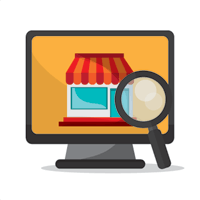Ecommerce Buyer's Guide: 2018 Edition

Now that the 2017 ecommerce holiday shopping season is complete, and retailers are in the midst of managing returns (and hopefully, counting up their profits), it is perhaps the very best time to start analyzing whether the ecommerce platform and the underlying software systems in place will be sufficient to achieve success in the future (e.g., 2018 holidays and beyond).
The first few months of every year are often dedicated to developing a deeper understanding of the user experience as well as the operational processes of an enterprise. Ecommerce merchants in particular use this time to jump ahead, preparing for future spending holidays.
As merchants start considering a different ecommerce platform and begin the buying process, they have a great deal to take into account.
With the often hefty costs associated with migrating to new systems and the eventual switch from the old and onto the new, the importance and complexity of the decision becomes increasingly clear.
Before the Switch
An ecommerce platform is a software application that allows merchants to develop and operate a storefront for their products or services. What indicators exist that it is indeed the right time to make the switch?
There are several including that the scope of the ecommerce operation has dramatically increased in some regard, additional traffic is causing issues with website performance or customer experience, databases are bulky and slow due to the number of products or third-party integrations, it is proving difficult to integrate new features or it is simply outdated (not mobile friendly). The essential question to ask is whether there are simply better and more appropriate options available on the market.
In the past ecommerce platforms provided a centralized operational dashboard for both product and customer data allowing businesses to perform a range of related activities including modifying product information, managing Web content and layout, handling online transactions, and a variety of other platform adjustments - and they very much still do. Today's systems, however, do this and a whole lot more. So what makes for a system that can satisfy the demands of a growing enterprise and its users?
Success Criteria
Modern systems for digital retailers aim to unify, scale and maintain all core business processes, from the selling of products and services to back-end functions including managing inventory and customer order history. How do they do it? If they do not offer these features "out of the box," then they integrate or build out their own.
There is a long list of features the ecommerce companies (review a list of must-have ecommerce features at wsm.co/ecommusts) must ensure exist within their software platform but more often than not the best systems are able to integrate with a variety of other technology providers. The end result, when integrations are effective, is a customized and robust solution ideal for each individual business.
Understand the Risks of Replatforming
Once there is a consensus from within the organization on the need to replatform and the requirements for a new system, it proves valuable to understand the risks associated with doing so.
Perhaps more than anything, it is essential to know what is actually entailed in transitioning to a new presence (processes for migration, testing, evaluation).
Switching to a new system that does not provide the same or similar functionality will also put an enterprise way behind as more development work will be required to fill gaps.
Another important consideration in light of this is the support that is provided during the migration as well as post-switch support. Service is essential throughout the actual transition so having a formal communication channel available to address issues proves quite rewarding.
Ready to Buy?
While purveyors of ecommerce systems want potential customers to believe that replatforming is not scary, and is no reason for concern, do not take it lightly. The digital world is changing - along with your and your customers' expectations. Making a switch to a new software system hastily can cause problems for many years and puts your success in jeopardy.
Keep Learning:








